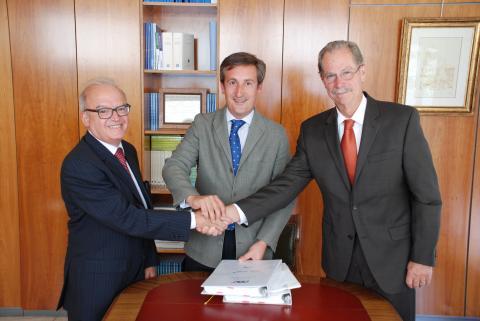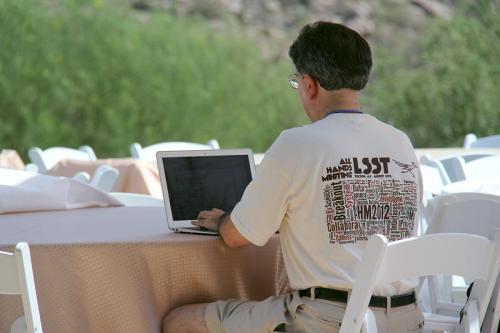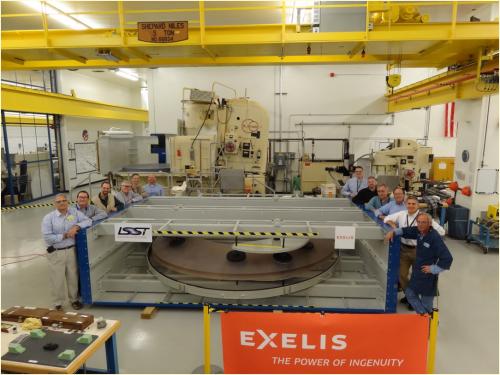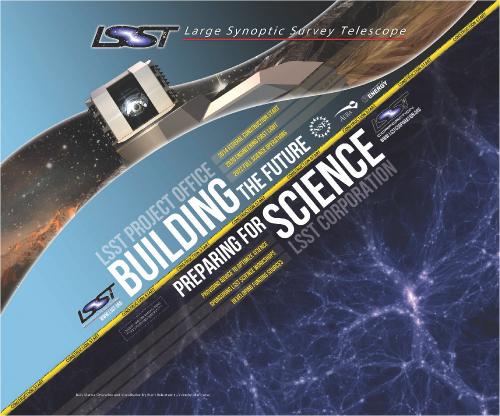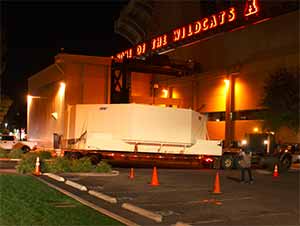The LSST monolithic M1M3 mirror blank approaches completion at the University of Arizona’s Steward Observatory Mirror Lab. The combined primary (M1) and tertiary (M3) surfaces are seen on the left in this image from July 2014 with the red polishing compound highlighting the active polishing zone of M3. In anticipation of completion, the vacuum lifting fixture (right, September 2014) is being assembled to supply suction to lift the mirror off the polishing cell and lower it into the mirror transport box once the polishing is complete. The fixture will then be disassembled and stored locally until it’s time to reinstall the M1M3 for final optical testing in the telescope cell prior to shipment to Chile.



